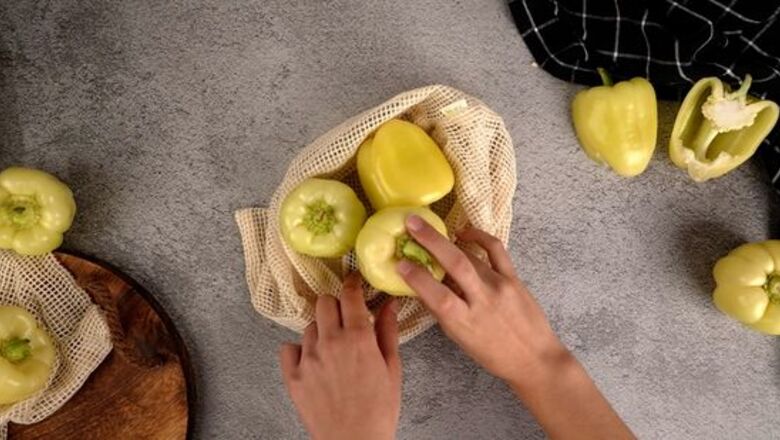
views
How to Store Bell Peppers in the Fridge
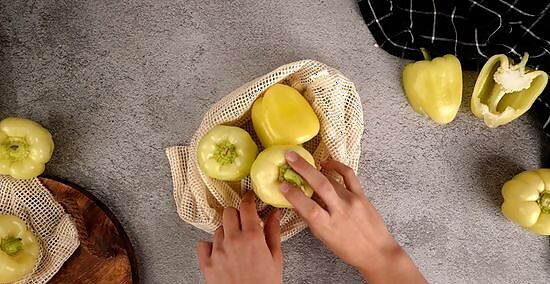
Whole bell peppers First, put whole bell peppers into a mesh produce bag, or any bag made out of a breathable material like cotton or muslin. Next, place the bag in the “crisper drawer” in your fridge. This helps control the humidity levels of the peppers, which prolongs their shelf life. Your refrigerated peppers should stay fresh for about 1-2 weeks. If you're leaving your bell peppers whole, you don’t need to wash them before putting them in the fridge. Washing may leave excess moisture on the peppers, which causes them to go bad faster. Wait until you're ready to eat or cook your peppers to wash them. Avoid storing bell peppers in the same drawer as fruits. Fruits release a gas called ethylene, which is a ripening agent that can cause vegetables to rot faster.
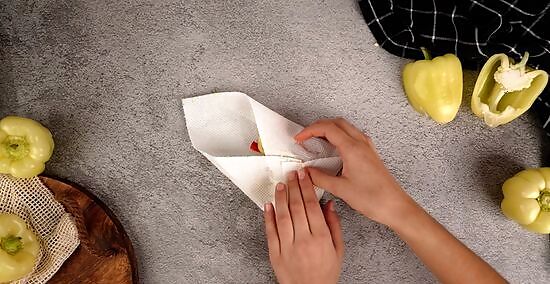
Cut bell peppers Wash your bell peppers thoroughly before cutting them. This prevents germs on the pepper’s skin from transferring to the inside. Dry the peppers thoroughly, then chop, dice, or slice them as desired. Place them in an airtight container or sealable bag on top of a paper towel and put them in the fridge. Your cut bell peppers should stay fresh in the fridge for 3-7 days.
How to Store Bell Peppers in the Freezer

Slice or chop your bell peppers before freezing them. Whole bell peppers don’t freeze well, so it’s important to cut them first. First, thoroughly wash and dry your peppers. Next, cut off the stem, slice the pepper in half, and remove the seeds with a spoon. Finally, cut or slice the pepper according to your preference.

Spread the bell peppers on a baking sheet and freeze for 1 hour. Arrange the chopped bell pepper pieces in a single layer, and avoid stacking them on top of each other, as this will cause them to freeze together in clumps.

Place the frozen peppers in a freezer bag or airtight container. Carefully remove the peppers from the baking sheet and transfer them to a resealable freezer bag or airtight container. If you’re using a freezer bag, squeeze out as much air as possible before sealing it. Your peppers should stay good in the freezer for 6-8 months. Write the date on the plastic bag or container using a marker to help you keep track of how long they’ll be fresh. If you want to eat the peppers raw, move them to the fridge to defrost for about 24 hours. If you want to cook with the peppers, there’s no need to defrost them first. Simply toss them into your recipe and cook as normal.
How to Store Bell Peppers on the Counter

Store bell peppers on the counter for just a day or two. Left out at room temperature, whole bell peppers should stay good for about 1-2 days. If you need your peppers to stay fresh for longer than this, it's best to toss them in the fridge instead. Note: Chopped or sliced bell peppers should always be stored in the fridge or freezer, not on the kitchen counter.
How to Preserve Bell Peppers
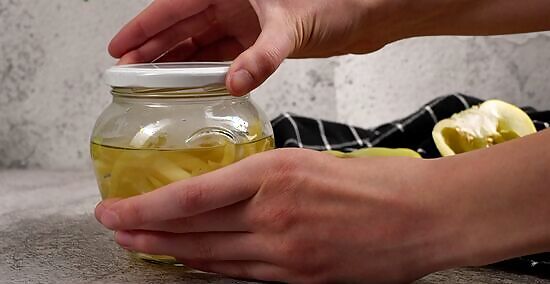
Pickling Pickled peppers are delicious, flavorful, and surprisingly easy to make. Pickling is also a great way to preserve bell peppers and extend their shelf life. Here’s how do it: Wash your bell peppers thoroughly, then cut into quarters and remove cores and seeds. Next, slice the peppers into strips. Add 1 cup (240 mL) water, ⁄2 cup (120 mL) distilled white vinegar, and ⅓ cup (67 g) of sugar to a saucepan and bring to a boil. Add kosher salt to taste. Place your bell peppers in the liquid mixture and bring to a boil again. Then reduce the heat to medium-low, and simmer for about 8-10 minutes. Transfer the peppers and liquid mixture to a sterilized glass jar, and store in the fridge.

Dehydrating If you have a vegetable dehydrator, this is also a great option for storing bell peppers. Dehydrated bell peppers are easy to use in recipes, and they have a much longer shelf life. Here’s a step-by-step guide on how to do it: Thoroughly wash your bell peppers, then core them and remove the seeds. Chop the bell peppers into small pieces. Place your chopped bell peppers onto the mesh trays that came with your dehydrator machine. Dry at 125°F for 6-10 hours. Your bell peppers are done when they are no longer bendy or pliable. If they snap easily when you try to bend them, you’re all good. Place your dehydrated bell peppers in an airtight container and store in a cool, dry place (like your pantry). When you’re ready to eat your peppers, soak them in a bowl of hot water for up to 30 minutes to rehydrate them.
How to Tell if Bell Peppers Have Gone Bad

Pick up your bell peppers and feel for softness. Fresh bell peppers should be firm and crisp. If a pepper feels soft to the touch, it's likely on its way to spoiling. To check cut or sliced bell peppers, pick up a piece and try to bend it. If it snaps easily, it’s likely still fresh. If it’s super soft, pliable, or bendy, this indicates spoilage.

Check your peppers for moisture and sliminess. If your whole or cut bell peppers feel moist or slimy to the touch, this is a major sign that they’ve gone bad. Mold grows very easily in these conditions, so it's safest to throw these peppers out.
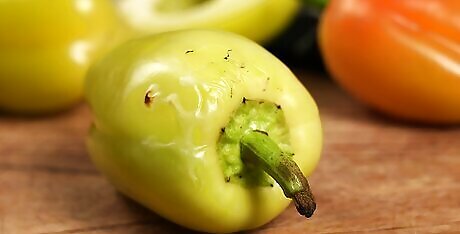
Look for shriveling or mod. If the skin on your bell peppers looks wrinkly or shriveled, they’ve likely gone bad. Visible mold is also a surefire sign of spoilage. If you see either of these things on your peppers, toss them out.
What to Look for When Buying Bell Peppers at the Store

Select bell peppers that are firm to the touch. They should have very tight skin, and there should be no signs of wrinkling or shriveling. Their colors should be very bright and vibrant as well. All of these signs indicate that your peppers are at their peak freshness, which means they’ll last longer!
Recipe Ideas and Uses for Bell Peppers

There are tons of yummy ways to incorporate bell peppers into your diet. Whether you’re eating them raw with some dip, or tossing them into a stir fry with other veggies, bell peppers make a flavorful and colorful addition to any meal. Here are some ideas for how to use them: Roast, sautee, or grill bell peppers for a delicious side dish Toss chopped raw bell peppers into a salad Make a bell pepper, onion, and cheddar cheese omelet Slice raw bell peppers and dip them in hummus or ranch for a snack

Bell peppers also play a key role in tons of delicious recipes. From pizza to fajitas, the options are endless! Here are some yummy recipes featuring bell peppers if you’re looking for inspiration: Chicken stir fry Pepperoni, sausage, & bell pepper pizza Chicken fajitas Pepper steak Pasta salad Chicken kabobs Crockpot chili




















Comments
0 comment